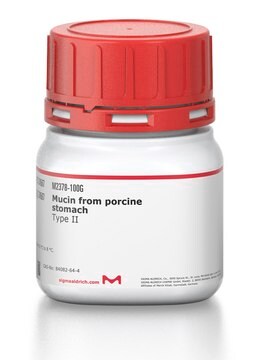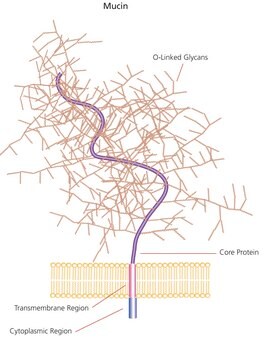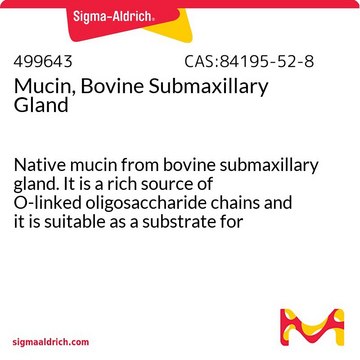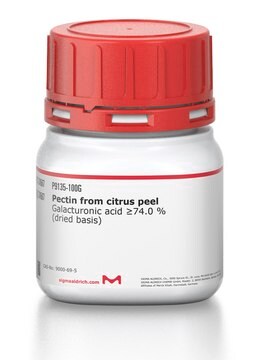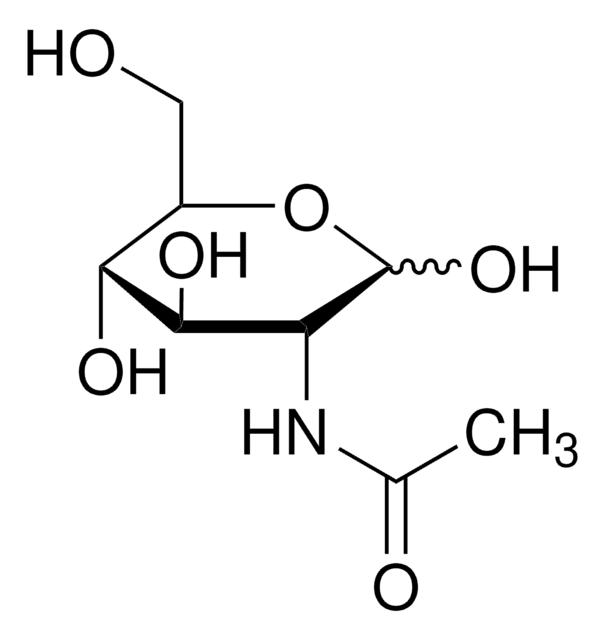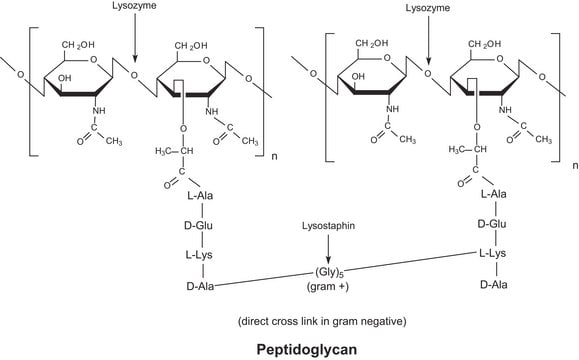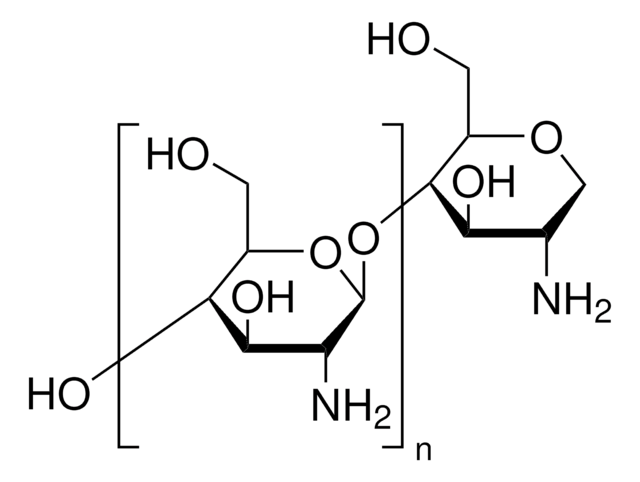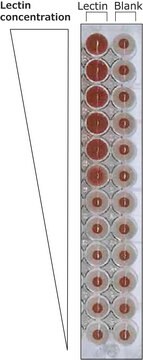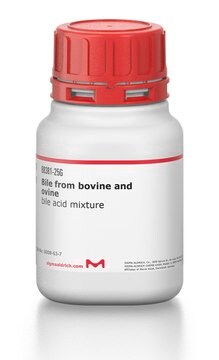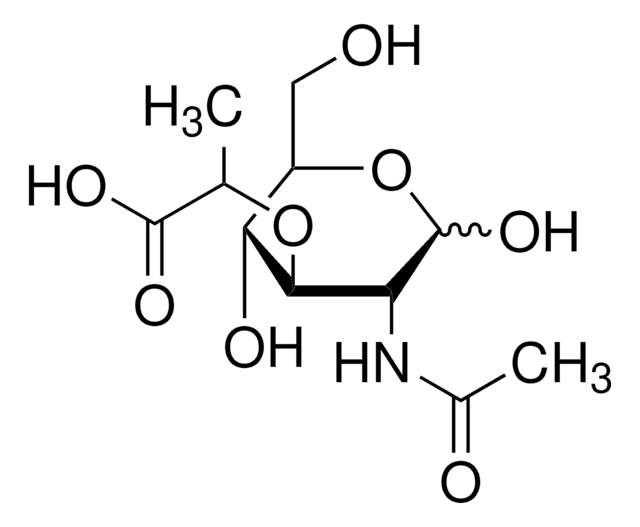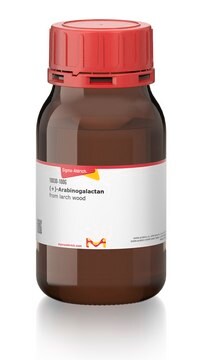Wszystkie zdjęcia(2)
Kluczowe dokumenty
M1778
Mucin from porcine stomach
Type III, bound sialic acid 0.5-1.5 %, partially purified powder
Synonim(y):
MUC
Zaloguj sięWyświetlanie cen organizacyjnych i kontraktowych
About This Item
Polecane produkty
pochodzenie biologiczne
Porcine stomach
Poziom jakości
typ
Type III
Formularz
partially purified powder
skład
bound sialic acid, 0.5-1.5%
metody
microbiological culture: suitable
rozpuszczalność
NaOH: soluble 20 mg/mL
temp. przechowywania
2-8°C
Szukasz podobnych produktów? Odwiedź Przewodnik dotyczący porównywania produktów
Opis ogólny
Mucins or mucus glycoproteins are the main macromolecular components of mammalian mucus. It was also used in a study to evaluate the sputum smears concentrated by cyto-centrifugation for detection of acid-fast bacilli.
Zastosowanie
Mucin from porcine stomach was used in studies on the binding site of the galactose-specific agglutinin PA-IL from Pseudomonas aeruginosa.
Działania biochem./fizjol.
Mucus forms the protective cover for all epithelial surfaces. The major structural component of mucus is gel-forming mucins. The mucus layer covering the intestinal epithelium has the MUC2 mucin as its central molecule. MUC2 is produced by goblet cells.
Uwaga dotycząca przygotowania
Prepared according to the method of Glenister, et al., for use in complex growth media for dental plaque bacteria.
Ta strona może zawierać tekst przetłumaczony maszynowo.
Kod klasy składowania
11 - Combustible Solids
Klasa zagrożenia wodnego (WGK)
WGK 3
Temperatura zapłonu (°F)
Not applicable
Temperatura zapłonu (°C)
Not applicable
Środki ochrony indywidualnej
Eyeshields, Gloves, type N95 (US)
Wybierz jedną z najnowszych wersji:
Masz już ten produkt?
Dokumenty związane z niedawno zakupionymi produktami zostały zamieszczone w Bibliotece dokumentów.
Klienci oglądali również te produkty
Anastasia Matthies et al.
Applied and environmental microbiology, 74(15), 4847-4852 (2008-06-10)
The metabolism of isoflavones by gut bacteria plays a key role in the availability and bioactivation of these compounds in the intestine. Daidzein and genistein are the most common dietary soy isoflavones. While daidzein conversion yielding equol has been known
Helen Rose et al.
The Journal of antimicrobial chemotherapy, 63(3), 502-510 (2009-01-21)
The Burkholderia cepacia complex (Bcc) species are important opportunistic pathogens with intrinsic antibiotic resistance. They are also well known as contaminants of disinfectants, yet their biocide susceptibility has not been studied in detail. We investigated Bcc biocide susceptibility and correlated
Gabriel M F Almeida et al.
mBio, 10(6) (2019-11-21)
Metazoans were proposed to host bacteriophages on their mucosal surfaces in a symbiotic relationship, where phages provide an external immunity against bacterial infections and the metazoans provide phages a medium for interacting with bacteria. However, scarce empirical evidence and model
Leyuan Li et al.
Microbiome, 8(1), 33-33 (2020-03-13)
Human-targeted drugs may exert off-target effects or can be repurposed to modulate the gut microbiota. However, our understanding of such effects is limited due to a lack of rapid and scalable assay to comprehensively assess microbiome responses to drugs. Drugs
Jonathan E Phillips et al.
Journal of pharmacological and toxicological methods, 53(2), 160-167 (2006-03-02)
A method to measure the mucin concentration in bronchoalveolar lavage (BAL) fluid was developed to aid efforts to identify pharmacologically the mechanisms that modulate pathophysiological mucin secretion. Mucins are the major macromolecular components of mucus. In the airways, mucus is
Nasz zespół naukowców ma doświadczenie we wszystkich obszarach badań, w tym w naukach przyrodniczych, materiałoznawstwie, syntezie chemicznej, chromatografii, analityce i wielu innych dziedzinach.
Skontaktuj się z zespołem ds. pomocy technicznej